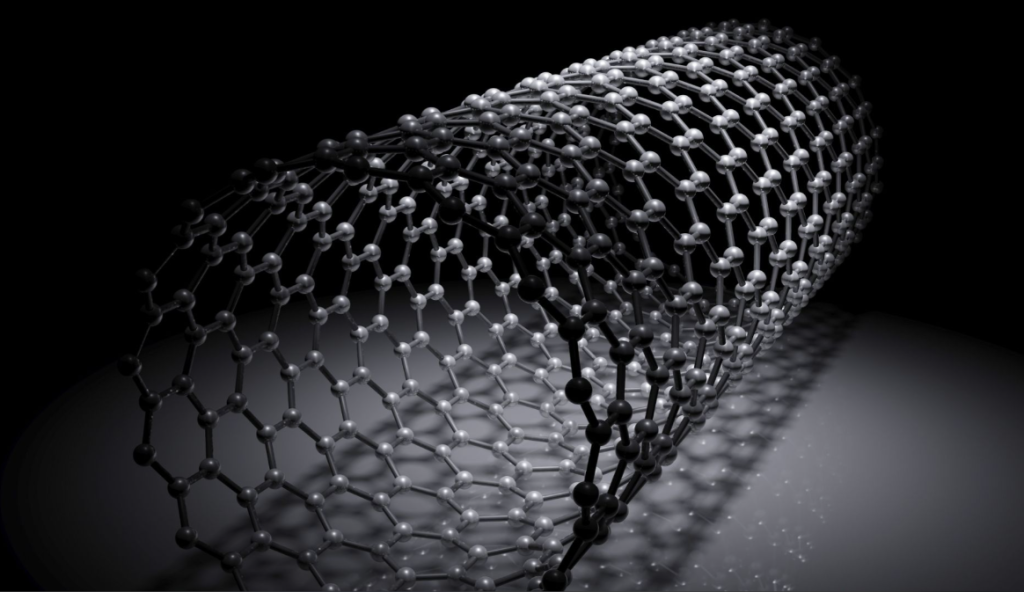Introduction
As global demand for clean water surges, advanced filtration technologies have become critical. Traditional purification systems often face limitations in energy efficiency, fouling resistance, and pathogen removal. Carbon nanotubes (CNTs) offer an extraordinary solution. Their nano-scale pores, hydrophobic surfaces, and high mechanical strength make them ideal for ultrafiltration and even seawater desalination.

This article explores how CNTs are transforming water purification systems, from municipal treatment plants to portable personal devices.
1. What Makes CNTs Ideal for Water Treatment?
-
Nano-scale Pores: SWCNTs have inner diameters ~1–2 nm, perfectly sized for size-exclusion filtration
-
Hydrophobic Channels: Water flows rapidly through CNT interiors due to near-frictionless transport
-
Antibacterial Surfaces: Functionalized CNTs disrupt microbial membranes, reducing biofouling
-
Chemical Functionalization: Can be tuned to target heavy metals, organics, or salts
2. Types of CNT-Based Water Filters
a. Vertically Aligned CNT (VA-CNT) Membranes
Aligned CNTs serve as nanostraws allowing:
-
High water flux
-
Salt and pathogen rejection
-
Anti-clogging properties
b. CNT-Polymer Composite Membranes
Blending CNTs into membranes such as PES or PVDF:
-
Enhances mechanical strength
-
Improves filtration precision
-
Increases lifespan of the filter module
c. CNT Sponges and Aerogels
Used in:
-
Oil spill cleanup
-
Organic pollutant absorption
-
Heavy metal capture (e.g., arsenic, lead, mercury)
3. CNTs in Desalination Technologies
a. Reverse Osmosis (RO) Enhancement
CNTs incorporated in RO membranes offer:
-
Higher flux with same salt rejection
-
Reduced energy input per cubic meter
-
Better anti-scaling behavior
b. Forward Osmosis (FO) and Capacitive Deionization (CDI)
CNT-based electrodes enhance CDI systems through:
-
Fast ion transport
-
Higher adsorption capacity
-
Lower regeneration energy
4. Pathogen Removal and Disinfection
CNTs demonstrate antimicrobial behavior against:
-
E. coli, Salmonella, Pseudomonas, and other bacteria
-
Viruses and fungal spores
They rupture cell walls and limit colony growth, especially when combined with:
-
Silver nanoparticles (AgNPs)
-
Photocatalysts like TiO₂
-
UV-light activated CNT systems
5. Real-World Applications
-
Portable water filters for disaster relief or military use
-
Point-of-use (POU) filters in homes or clinics
-
Industrial wastewater treatment for dyes, oils, and pharmaceuticals
-
Seawater desalination pilots in arid regions
6. Challenges and Research Directions
a. CNT Dispersion
Solutions:
-
Functionalization (COOH, NH₂ groups)
-
Use of surfactants or polymer binders
-
Plasma or UV treatment of CNT surfaces
b. Safety and Leaching
Ongoing studies assess:
-
Potential cytotoxicity from free CNTs
-
Ensuring CNTs are embedded in stable matrices
-
Post-use disposal strategies for CNT filters
c. Cost and Scale-Up
While costs are dropping (from $300/g to <$10/g), scalable production methods like:
-
Floating catalyst CVD
-
Aerosol-assisted synthesis
are enabling industrial roll-out.
Conclusion
Carbon nanotubes are rapidly advancing from lab-scale filters to full-scale water purification systems. Their unique structure enables high-efficiency filtration, antimicrobial action, and low-energy desalination, making them vital for both developed and developing regions. With continuing innovation and responsible integration, CNT-based water technologies will play a key role in solving the 21st-century water crisis.

